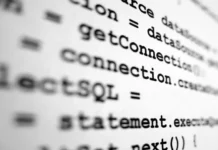As small business owners, managers, or HR professionals, we are all too aware of the importance of an effective payroll process. Not only does this system ensure your staff receive their deserved salaries on time, but it also guarantees transparency and compliance with tax regulations. One key component of the payroll process that often gets overlooked is the paystub – a document that offers a detailed breakdown of an employee’s earnings, deductions, and taxes.
Despite being so crucial, generating accurate pay stubs and managing an efficient payroll system can often become a complex task. Luckily, there are strategies you can adopt to simplify this process.
Contents
1. Get A Little Help
The first step towards streamlining your payroll process is investing in a robust paystub maker. This software not only reduces the time and effort required to generate pay stubs, but it also eliminates the chance of human error.
Simply input the necessary information – hours worked, rate of pay, deductions – and the software will produce a detailed, compliant, and professional pay stub. These tools also store data securely, ensuring easy access for future reference or audits.
2. Stay Updated On Regulations
Tax laws and payroll regulations are notoriously changeable. To ensure your pay stubs are accurate and compliant, it’s crucial to stay updated on all changes to federal, state, and local tax laws. Consider setting up alerts from regulatory bodies, or subscribing to HR and payroll news sources. Regular training for your payroll team on new regulations can also ensure accuracy.
3. Centralize Your Payroll Information
Keeping all your payroll-related information in one central, secure location can significantly simplify the process. This includes employee information, tax documents, overtime calculations, and paystubs.
A centralized system facilitates easy data access and reduces the likelihood of errors due to misplaced or lost information.
4. Implement A Cloud-Based System
Cloud-based payroll systems allow for real-time updates and instant access to information from anywhere, anytime.
This increases efficiency by allowing for simultaneous inputs from different users and immediate retrieval of data. Moreover, cloud-based systems often come with additional security measures to ensure data privacy and protection.
5. Regularly Review And Audit Your Payroll
Instituting a regular review and audit process for your payroll can help catch any errors early, thus maintaining the accuracy of paystubs. These audits should be comprehensive, evaluating everything from the accuracy of employee data to the proper calculation of overtime and deductions.
6. Encourage Employee Self-Service
Many payroll systems come with a self-service portal where employees can view their pay stubs, update personal information, and submit time-off requests.
This not only increases transparency and satisfaction among employees, but it also reduces the workload on the HR department, allowing them more time to focus on strategic tasks.
7. Train Your Payroll Team
A well-trained payroll team is an asset to any organization. Regular training sessions can ensure they are up to date with the latest software, regulations, and best practices. This knowledge will, in turn, enhance the accuracy of pay stubs and the overall efficiency of your payroll process.
In Conclusion
An accurate and efficient payroll process is an essential component of any business. While it can seem complex and overwhelming, implementing strategies such as using a pay stub maker, keeping abreast with regulations, centralizing payroll information, leveraging cloud technology, regularly reviewing your system, encouraging employee self-service, and investing in training can make a world of difference.
Remember, accurate pay stubs are not just about ensuring employees are paid correctly, but also about compliance, transparency, and ultimately, the success of your business.









































 Online casino
Online casino